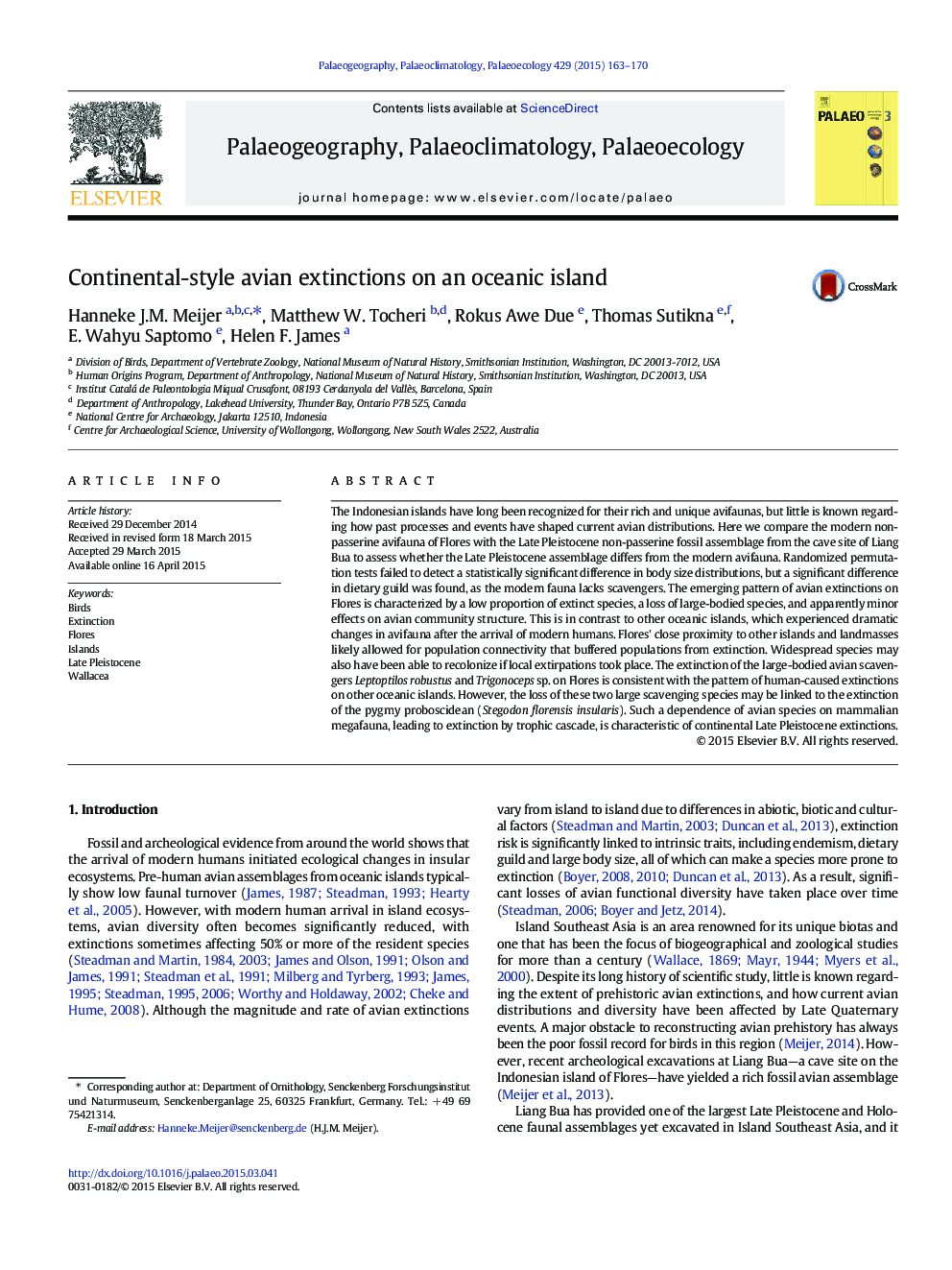| کد مقاله | کد نشریه | سال انتشار | مقاله انگلیسی | نسخه تمام متن |
|---|---|---|---|---|
| 4465973 | 1622161 | 2015 | 8 صفحه PDF | دانلود رایگان |
• We compared a Late Pleistocene bird assemblage from Flores with the modern avifauna.
• Late Pleistocene avian extinctions on Flores were limited.
• We found a significant difference in dietary guild, but no difference in body size.
• This is in contrast to other oceanic islands, where avian extinctions were significant.
• The loss of two large scavenging birds may be linked to the extinction of Stegodon.
The Indonesian islands have long been recognized for their rich and unique avifaunas, but little is known regarding how past processes and events have shaped current avian distributions. Here we compare the modern non-passerine avifauna of Flores with the Late Pleistocene non-passerine fossil assemblage from the cave site of Liang Bua to assess whether the Late Pleistocene assemblage differs from the modern avifauna. Randomized permutation tests failed to detect a statistically significant difference in body size distributions, but a significant difference in dietary guild was found, as the modern fauna lacks scavengers. The emerging pattern of avian extinctions on Flores is characterized by a low proportion of extinct species, a loss of large-bodied species, and apparently minor effects on avian community structure. This is in contrast to other oceanic islands, which experienced dramatic changes in avifauna after the arrival of modern humans. Flores' close proximity to other islands and landmasses likely allowed for population connectivity that buffered populations from extinction. Widespread species may also have been able to recolonize if local extirpations took place. The extinction of the large-bodied avian scavengers Leptoptilos robustus and Trigonoceps sp. on Flores is consistent with the pattern of human-caused extinctions on other oceanic islands. However, the loss of these two large scavenging species may be linked to the extinction of the pygmy proboscidean (Stegodon florensis insularis). Such a dependence of avian species on mammalian megafauna, leading to extinction by trophic cascade, is characteristic of continental Late Pleistocene extinctions.
Journal: Palaeogeography, Palaeoclimatology, Palaeoecology - Volume 429, 1 July 2015, Pages 163–170
